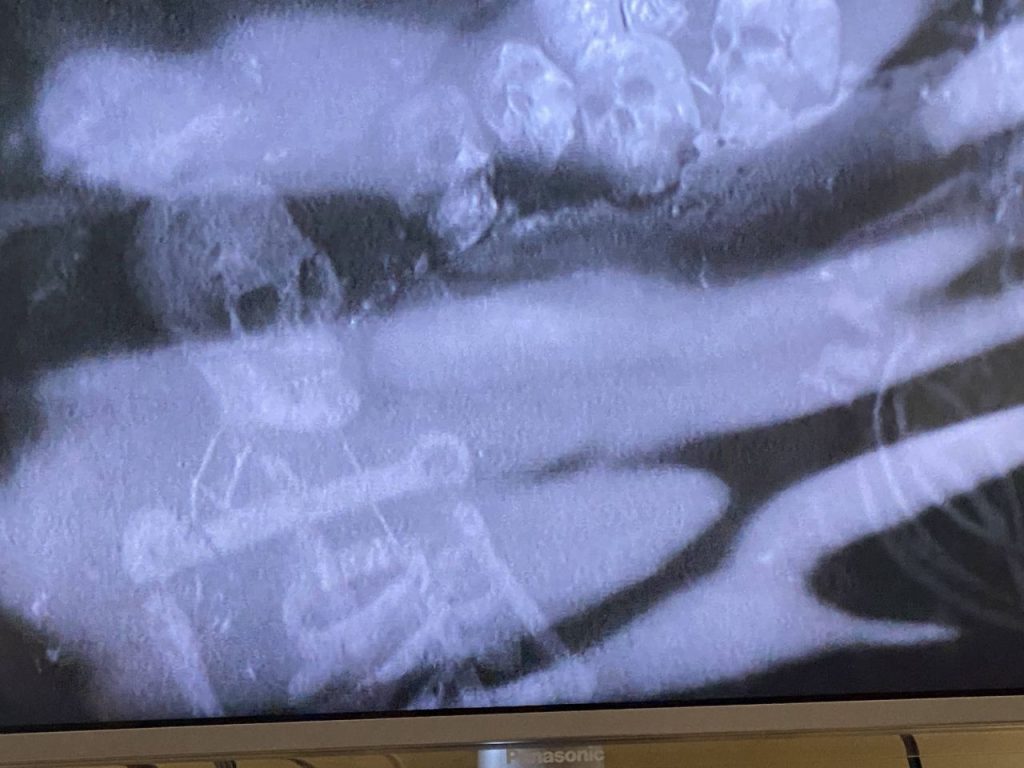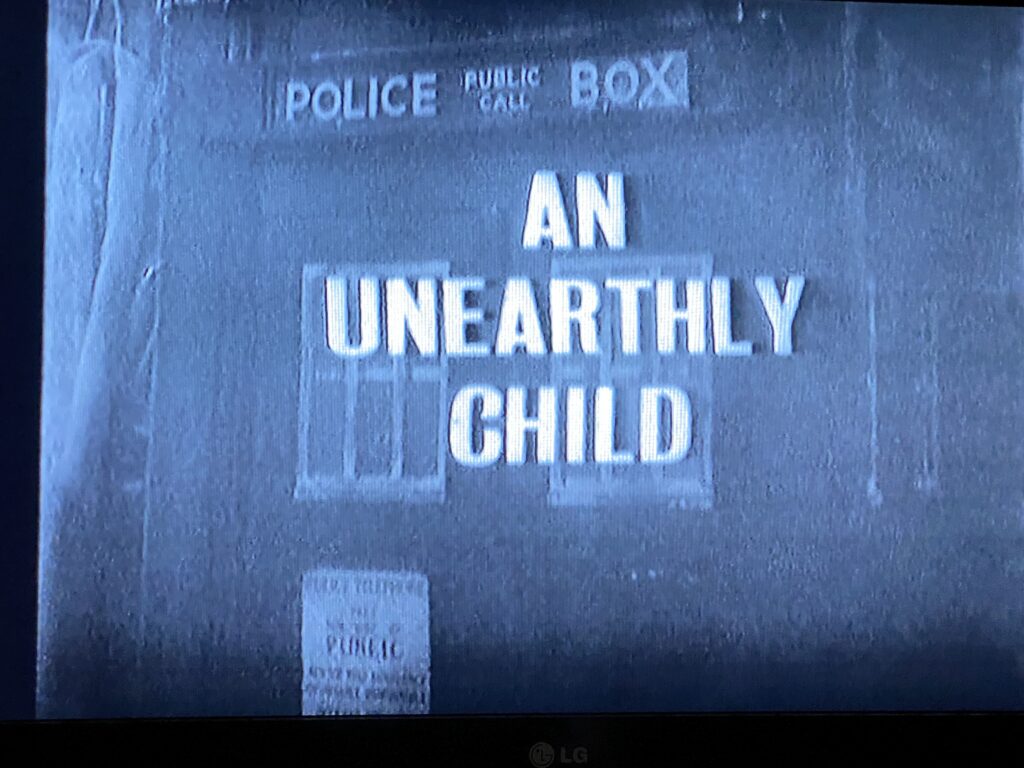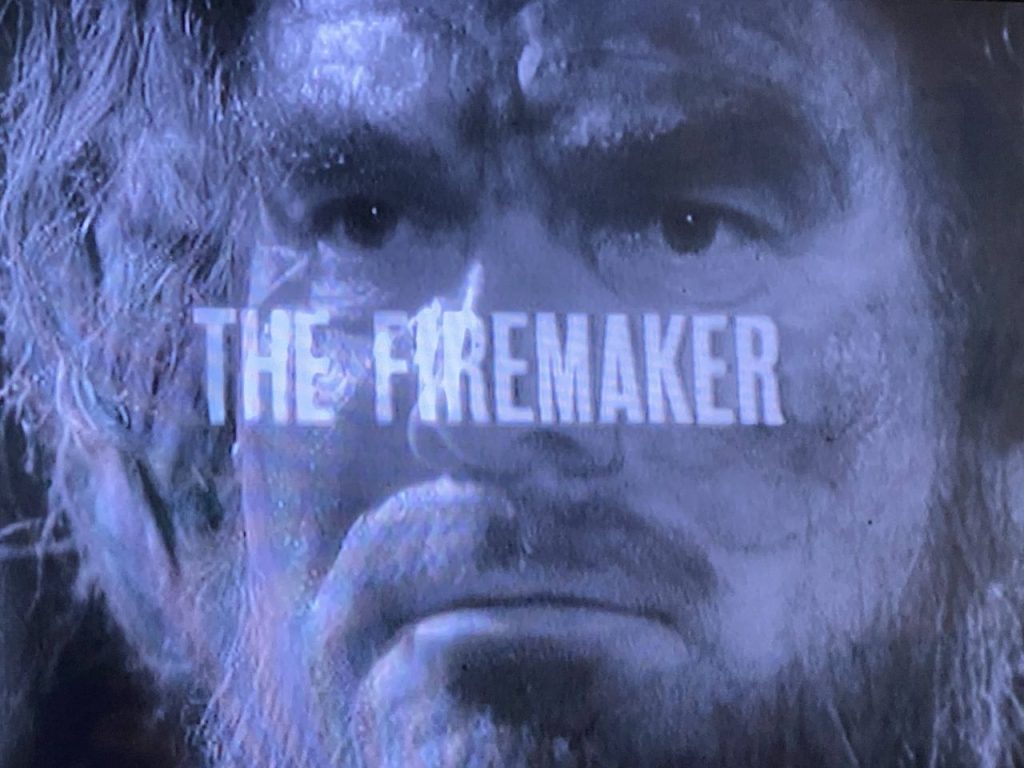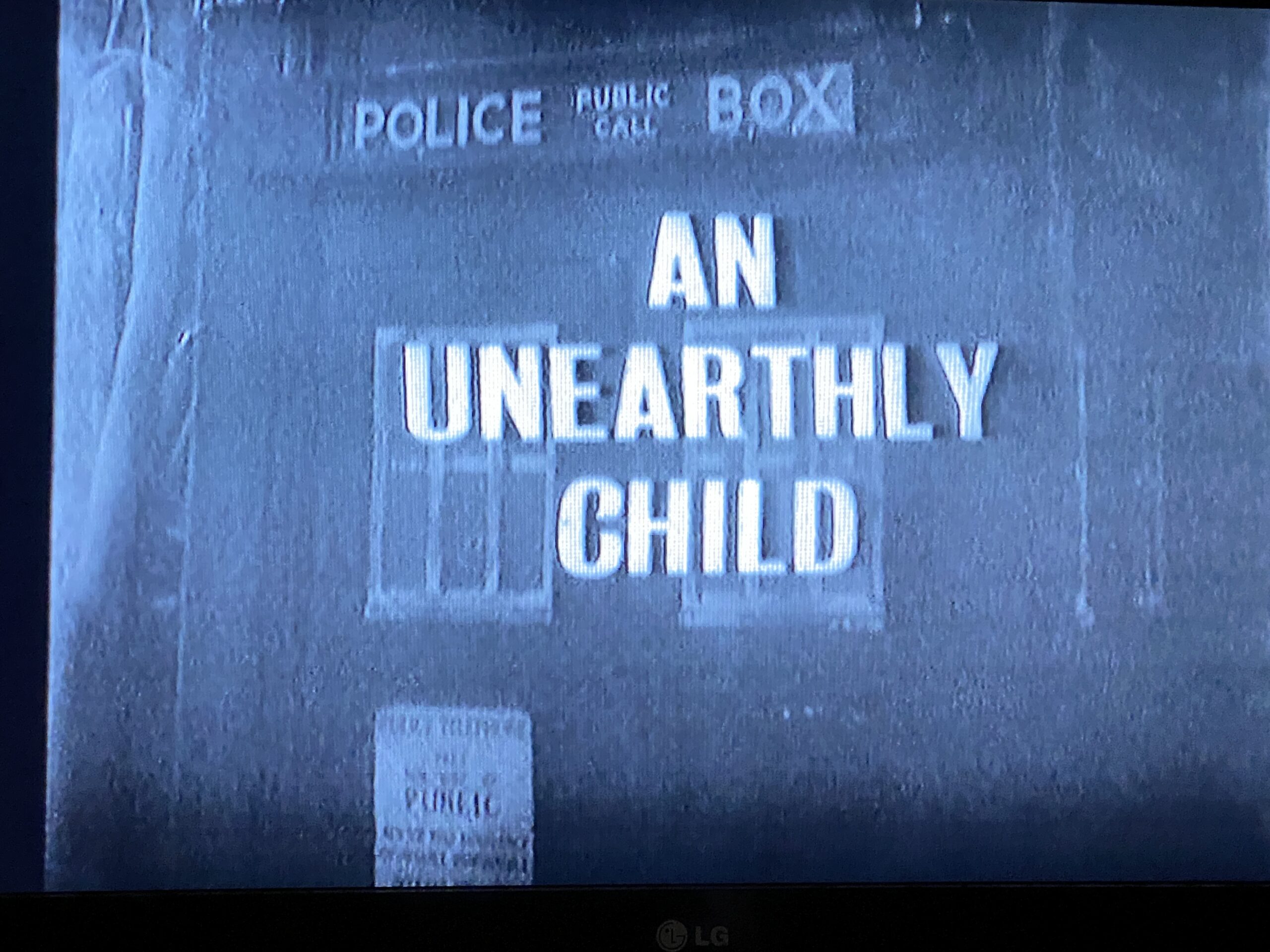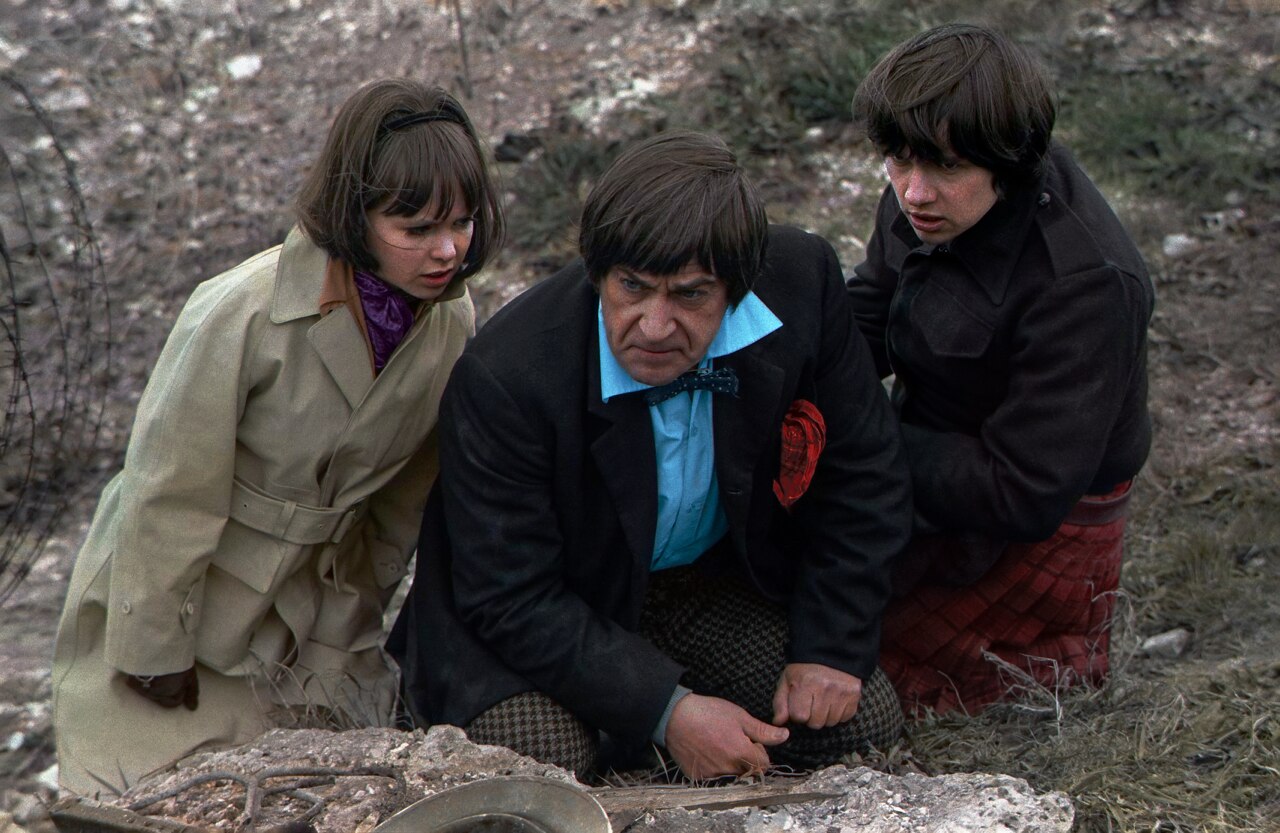Now Reading: 2: The Cave of Skulls
-
01
2: The Cave of Skulls
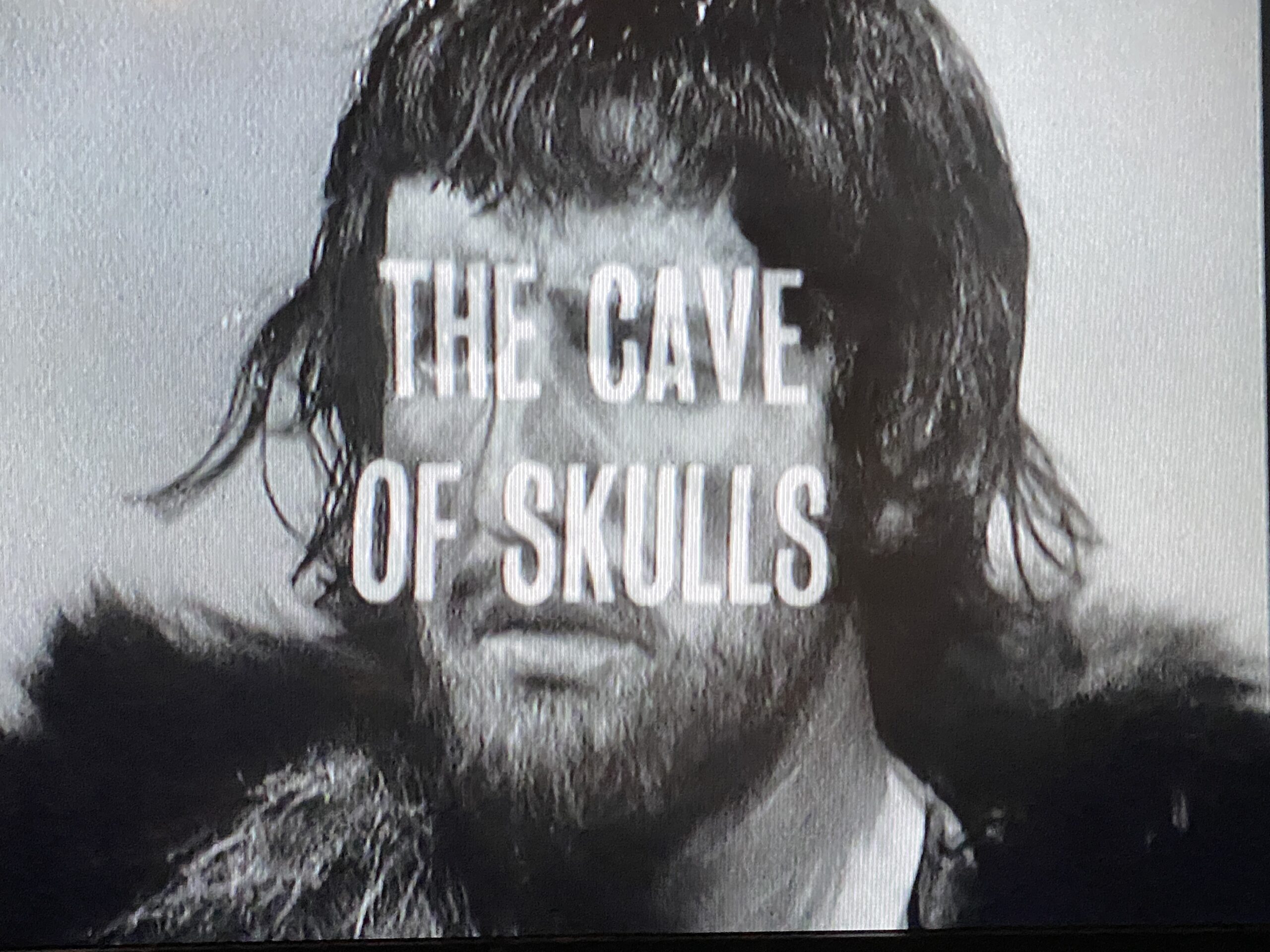
2: The Cave of Skulls
Last week, viewers saw a jaw-dropping mystery unfold, one that us as modern viewers take for granted: a thing that looked like a police box, standing in a junkyard can move anywhere in time and space. And not on wheels either.
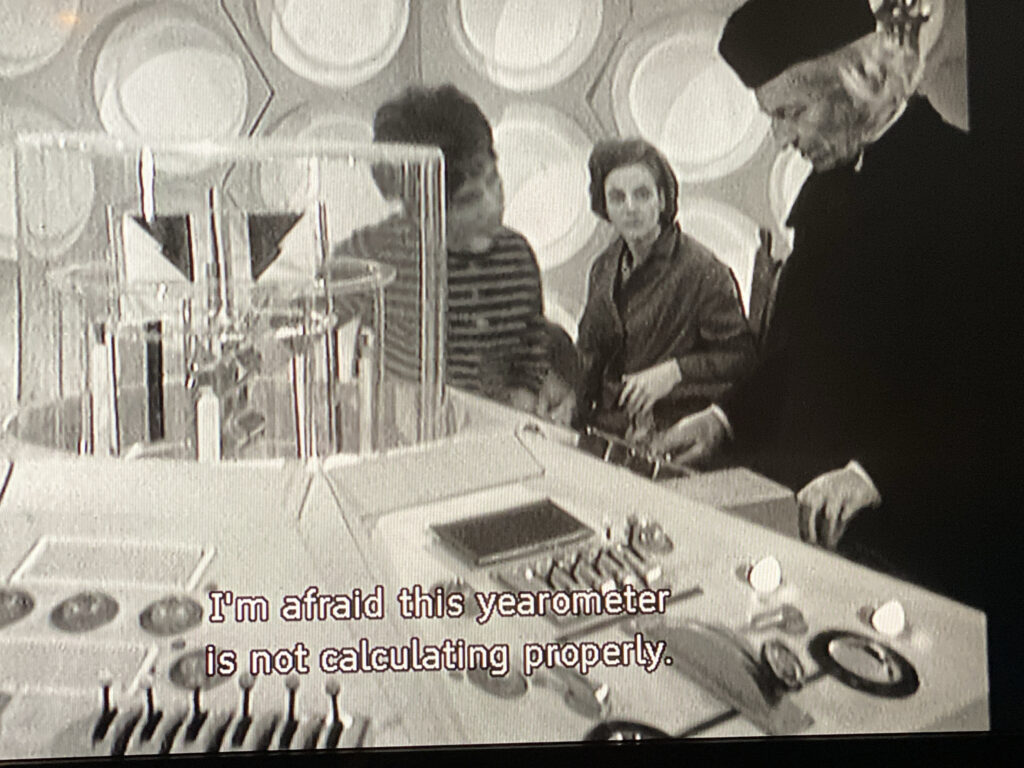
Barbara wakes from her first voyage in the Tardis to find the Doctor and Susan fresh as a daisy and at the controls Picture: Screengrab © BBC
Our heroes, schoolteachers Ian and Barbara, had followed their strange pupil to her home – a junkyard where in the middle was a police box and a cantankerous old man. Except the small police box was actually in another dimension to the inside. No wonder Susan Foreman couldn’t solve Ian’s science problem.
The old man was Susan’s grandfather, and very grumpy. Our heroes were electrocuted and then kidnapped as he sent the ship on a voyage into the unknown.
The episode ended with the strange juxtaposition of a police box on a sandy plain, as a spooky shadow slid into view.
The cliffhanger is a triumph – you have to know what happens next. Where, and when, our heroes are and if Doctor Who is a villain.
We have to wait a little longer to find out the answers to those questions. The cliffhanger resolves the riddle of the shadow by revealing it belongs to a man. A pan to a cave reveals he is from the stone age, and part of a group seeking the secret of fire.
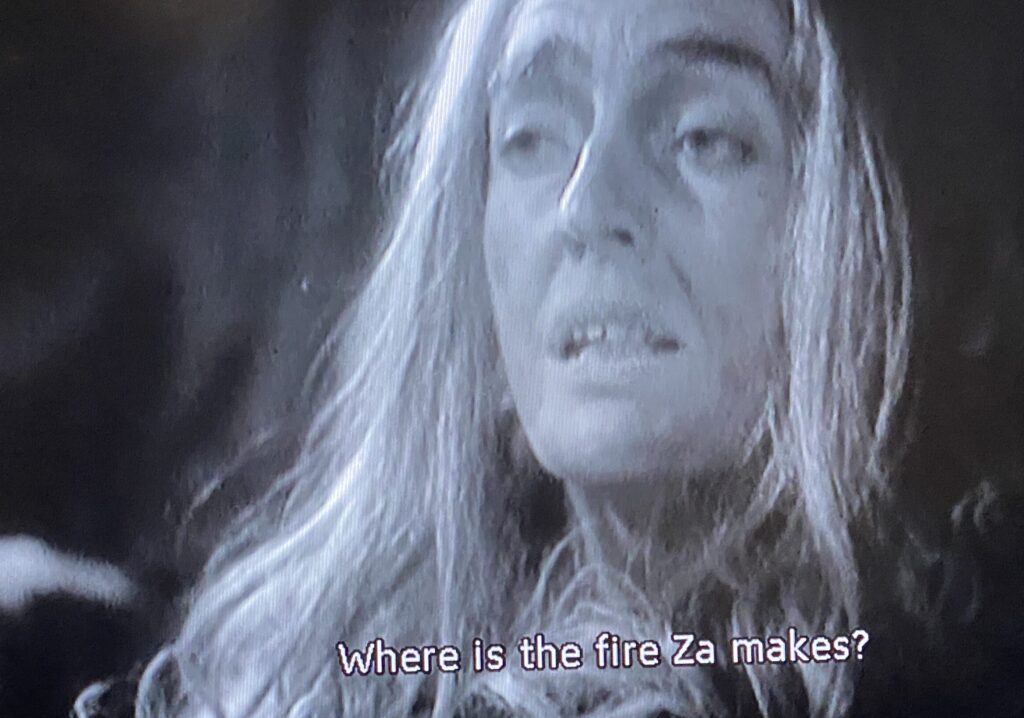
The life an soul of the caveman party, Old Woman is a source of encouragement to the whole tribe of Gum Picture: Screengrab © BBC
An old woman – a marvellous turn by Eileen Way, who will give another marvellous turn in one of earliest Who memories in 1979’s The Creature From The Pit – acts as a kind of Cassandra basically wanting the tribe to be cold, damp and miserable. Better off without fire, she says. No need for progress.
Inside the ship, Barbara first and then Ian come too, only to find the Doctor perched over the controls taking readings and finding out where they are. Except the machine is suddenly faulty and the four travellers have no way of finding out where or when they are.
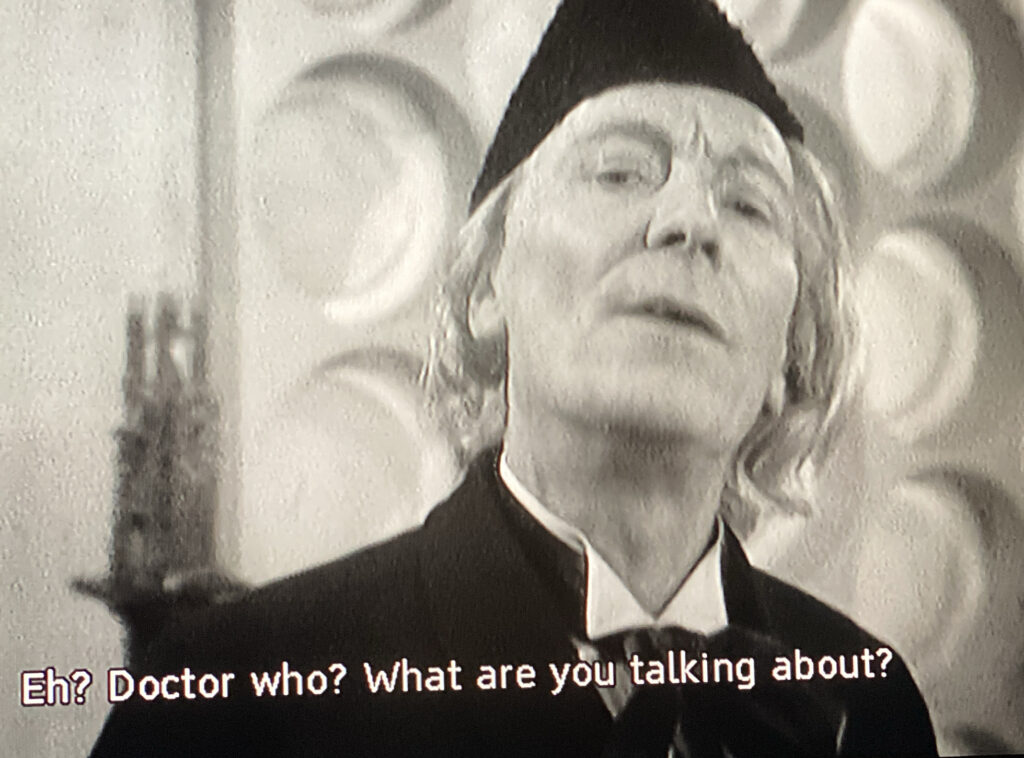
Doctor Who wonders who is Doctor Who, the first time the question has been asked in the show Picture: Screengrab © BBC
Ian wants to know who Doctor Foreman is, and we get our first Doctor Who? moment in the whole show. William Hartnell is magnificent at playing this mysterious and shifty stranger from another world. He’s clearly enjoying himself in this role, but the audience is left wondering whether his intentions are good, or whether he is misunderstood.
They set out – the Doctor resolute, determined and a miserable old boot, armed with a satchel full of scientific instruments. Is this the inspiration for his dimensionally transcendental doctor’s bag in TV Comic two years later?
Ian and Barbara have serious culture shock, refusing to believe they’ve left London, let alone travelled in time until they take a step out on to the sandy plain.
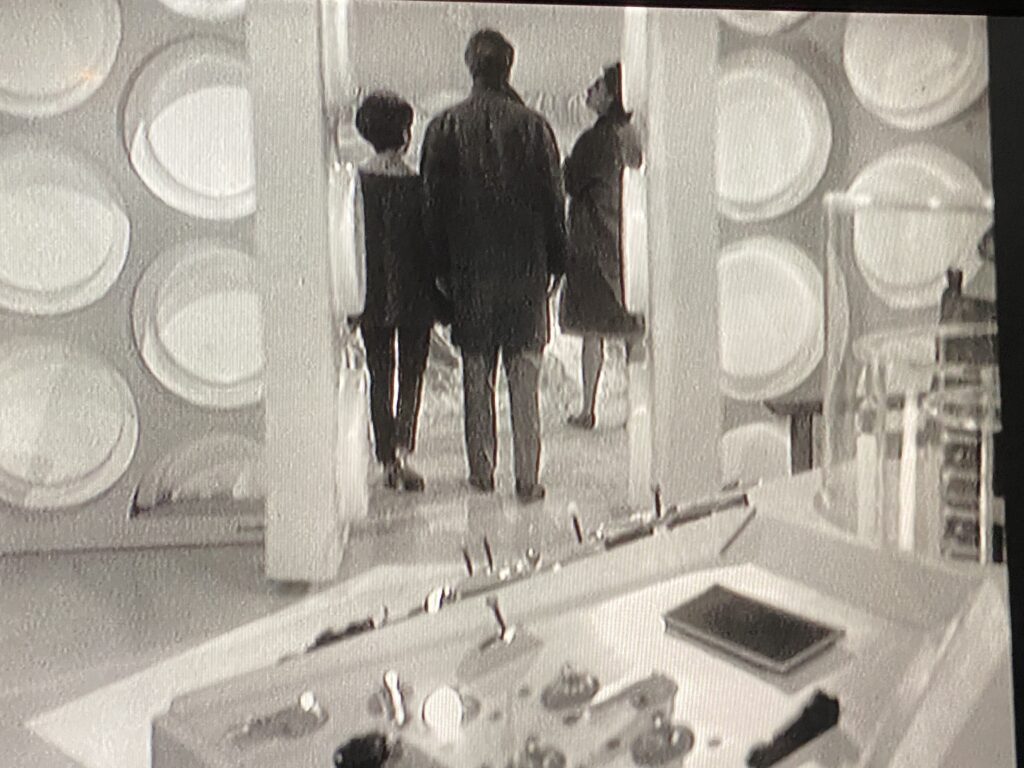
For the first time, Ian and Barbara leave the Tardis to step out on to an alien world. The way this is shot sells the illusion not just of the time travel, but the Tardis being bigger on the inside Picture: Screengrab © BBC
There is, like most of this story, some glorious direction and set-ups, including this first exit from the Tardis. We can see the exterior the Tardis team are walking into through the doors. A very quick cut to exterior filming, and we see them come out of the police box. It sells the illusion that the ship really is bigger on the inside than the out, and helps us understand the struggle Ian and Barbara have with their change in circumstances.
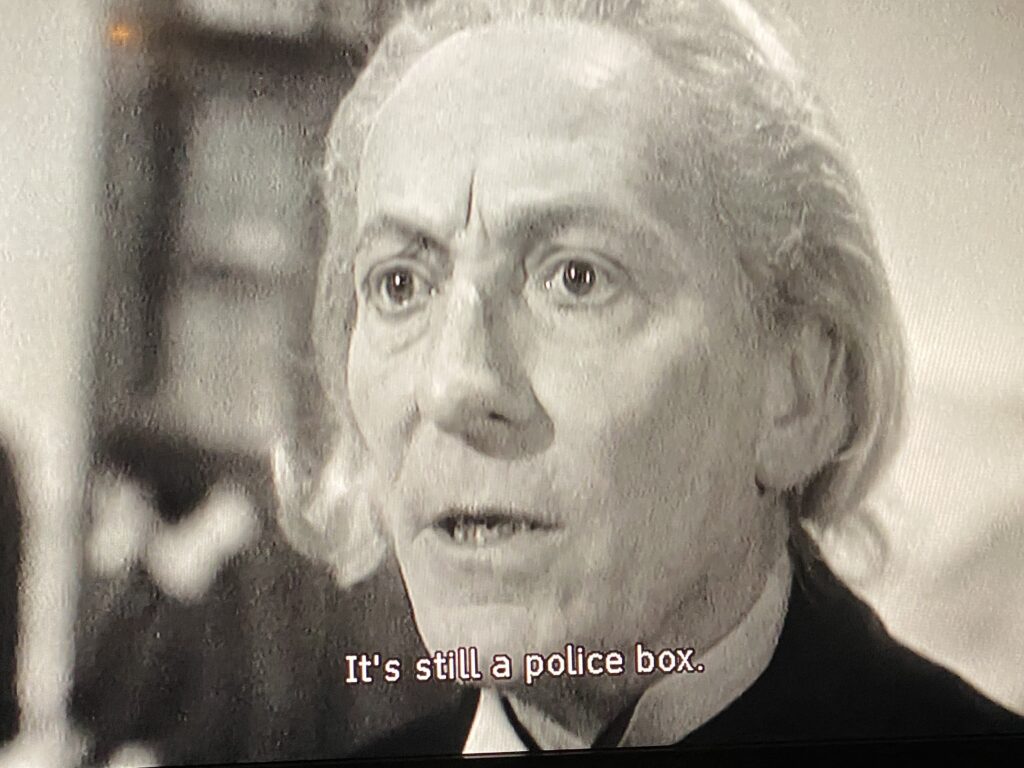
A shock for the Doctor as he realises the Tardis hasn’t changed shape, and is still looking like a police box Picture: Screengrab © BBC
There isn’t a change in circumstances for said police box. The Doctor seems shocked and points out that it would still look perfectly in keeping with 1960s London, while Susan reveals that it was once a sedan chair. A central premise of the series is now set up: a police box at all times. Well, give or take.
Another central premise is the Doctor as a scientist, gathering samples for analysis is because he’s determined to learn. The initial pitch for the show by Sydney Newman was for it to be educational as well as entertainment – Lord Reith would be proud.
So, the Doctor wanders off to take some readings and, for the first and only time in the history of the show, he lights up. To modern eyes it’s weird. Since the smoking ban came in by 2007, seeing people light up has become a rare sight. Even Tom Baker back in the 1970s avoided smoking in front of young noses, because he took his role as a children’s hero seriously.
It’s here because it’s a necessary plot device: the Doctor makes fire come from his fingers, and is witnessed by caveman Kal who clobbers him.
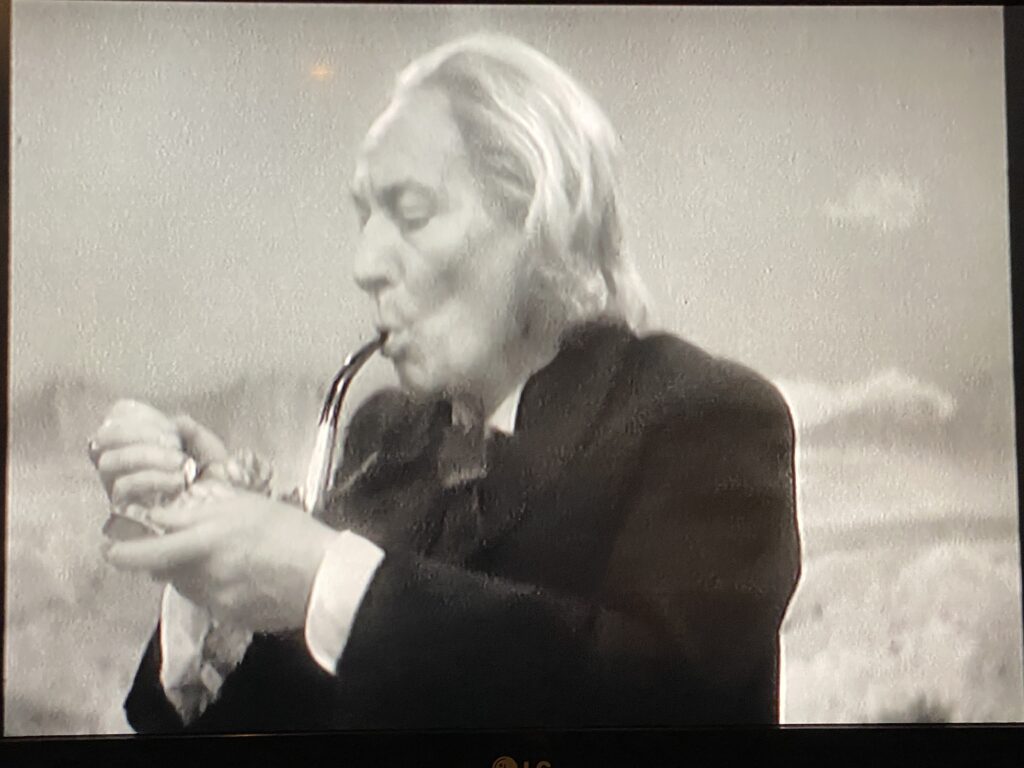
The Doctor lights up a pipe, this story is the first and only time he smokes on screen Picture: Screengrab © BBC
Waris Hussein’s direction keeps everything tight and we sense the peril the Tardis crew are in: strangers flung together not by circumstance, but nosiness and cruelness. We share Susan’s disquiet when she realises Grandfather has been kidnapped, we feel Ian and Barbara’s frustration and fear when they realise he is their key to getting back.
Back at the tribe, a stage play worth of the Royal Shakespeare Company is taking place. While Ka and Zar manage to grunt and gutter like we imagine cavemen to do, Horg has evolved to speak perfect received pronunciation. Can’t make fire, can speak as if an Olivier Award beckons.
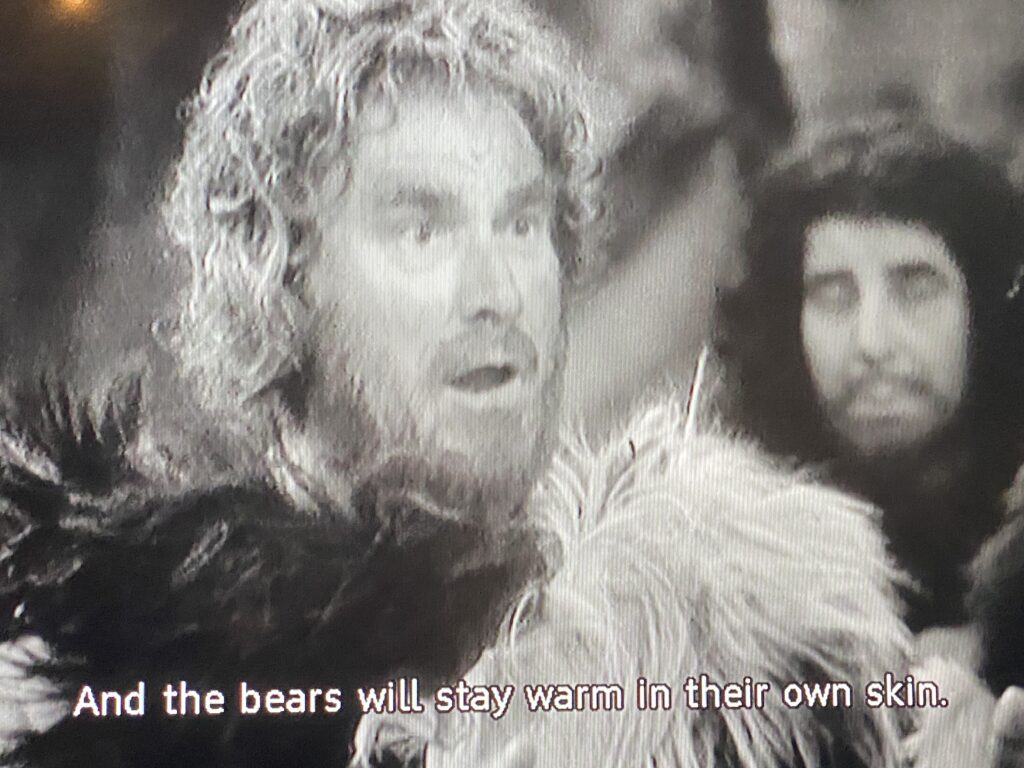
Horg, played by Howard Lang, speaks the Queen’s English, quite an impressive feat for a caveman Picture: Screengrab © BBC
It’s clear quickly that without fire the tribe faces death. It’s also clear from the tedious dialogue and miserable extras that the budget could only stretch to five additional speaking roles while everyone else stands around and scratches their flea bites from the furs they’re wearing.
Thank goodness Ian, Barbara and Susan manage to find the right cave to add some 20th century action to the proceedings, and just before the Doctor is sport for these chilled and chilling cavemen.
A studio-bound fight that wouldn’t be amiss in a 1966 episode of Batman ensues, and our four travellers – we can’t call them friends yet – are thrown into another cave, full of skulls and the stench of death.
There is an important moment here: the characters start to form a bond and it comes with the Doctor apologising to Ian and Barbara, quite unprompted, that he is sorry he has got them in this mess. That shows some more depth and a softer side to the character than we’d previously seen. It is a welcome moment as having the Doctor be a miserable old so-and-so throughout the series would be a mistake.
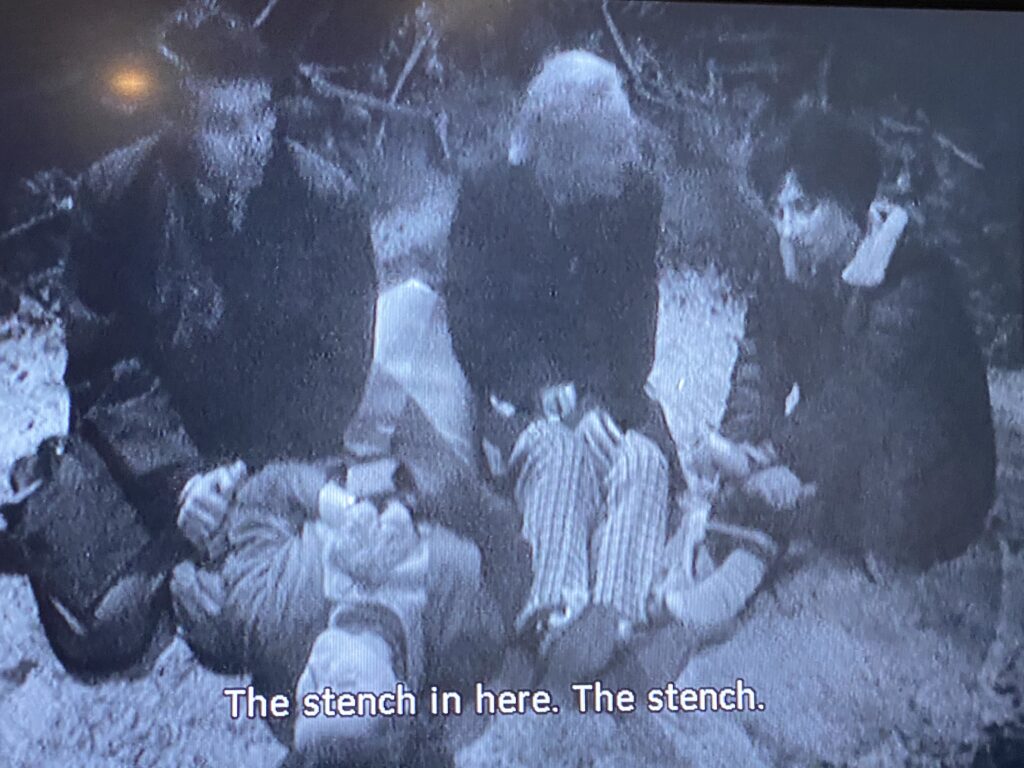
The cave of skulls is named after the fact it is a cave, filled with skulls. Picture: Screengrab © BBC
The episode ends not with immediate peril, but the dawning realisation that if the cavemen are going to kill, it will be a sharp blow to the head that will split their skulls. Truly, nightmare fuel especially as the episode ends on a close-up of said bones.
NEXT EPISODE: The Forest of Fear
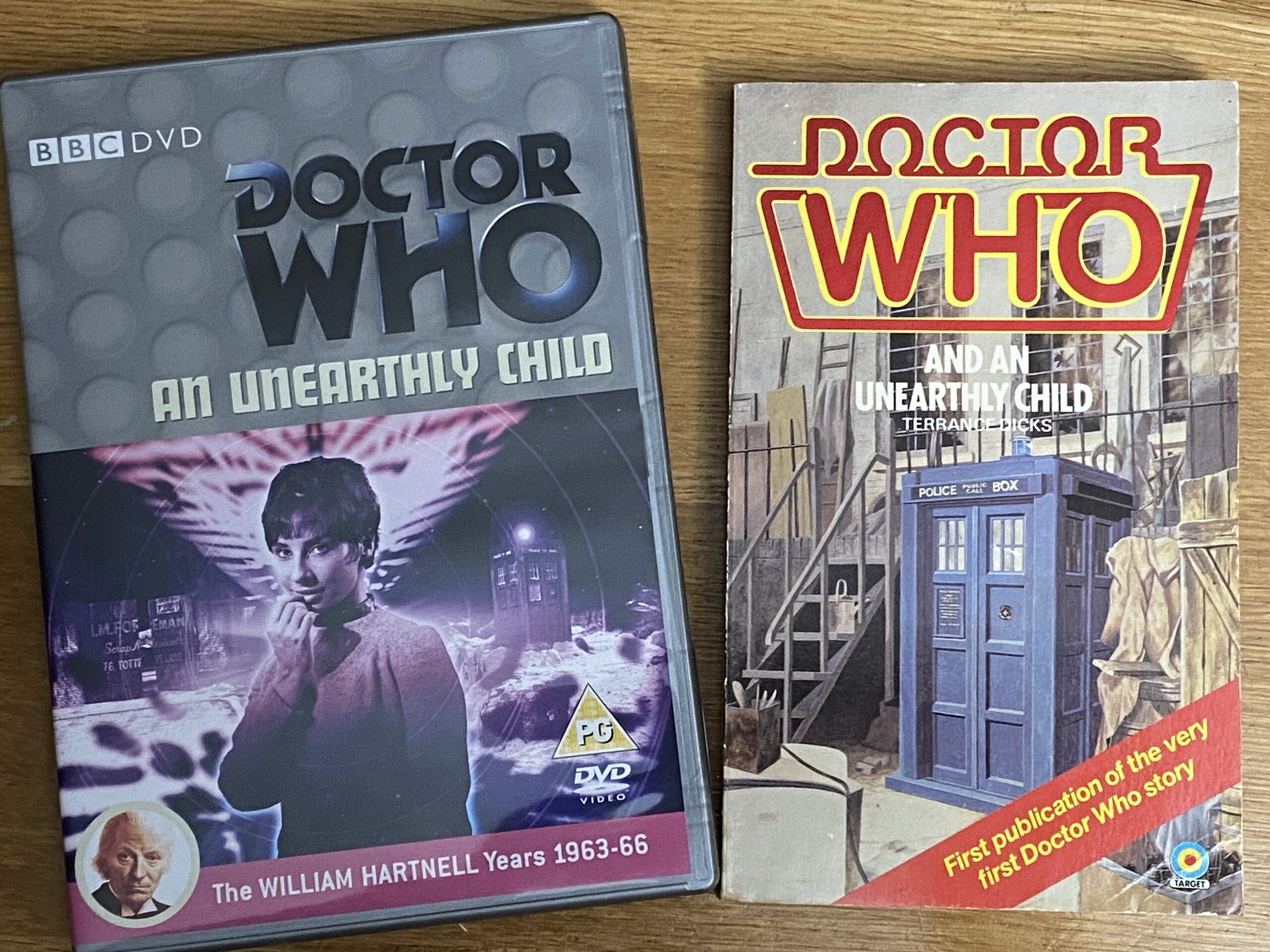
An Unearthly Child is available on DVD while stocks last and was also released as a Target novel in 1981 Picture: Phil Creighton
Search for An Unearthly Child on Amazon.co.uk
This is an affliate link











